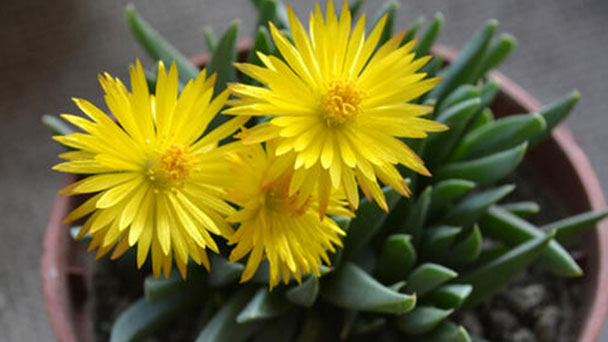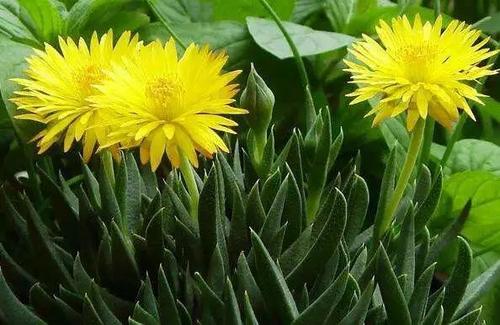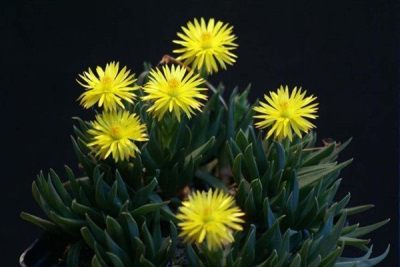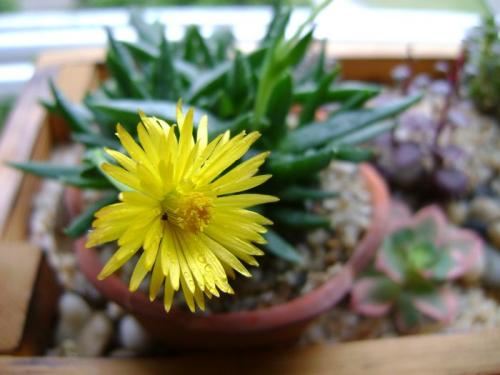Bergeranthus Multiceps Profile
Written by Maggie
Nov 08 2021

Bergeranthus multiceps, a succulent plant of the genus Albiaceae. The Bergeranthus multiceps has thick, juicy leaves that are elegant and produce golden summer flowers. Bergeranthus multiceps is shining, very attractive. Bergeranthus multiceps loves the sun, avoid often time in the scorching sun. According to the wave with high-quality basin bowl adornment, put tea table, rich ancient frame or windowsill, pure and fresh and elegant, green pleasing to the eye. It is native to southern South Africa and Namibia. Bergeranthus multiceps, whose name originates from Japan, generally bloom at 2 PM in China (it opens at about 3 PM in Japan, and is also called three-hour grass).
Bergeranthus Multiceps Picture

Characteristics of Bergeranthus Multiceps
Bergeranthus multiceps, a fleshy perennial herbaceous plant, stemless, short, herbaceous, 5-6 cm tall, 6-10 cm wide. A single leaf with 6-8 leaves, radial arrangement; Leaf blade is soft, inverted triangulate shape, the front is flat, back keel convex; Leaf blade of bergeranthus multiceps is opposite, leaf root integrated, white, apex tapering; Skin is smooth, green to dark green, covered with transparent small spots.
The flowers of the bergeranthus multiceps are golden yellow, single, daisy-like, and bloom for up to seven days. Capsule is fleshy; Seeds are small and numerous.
Distribution of Bergeranthus Multiceps
Bergeranthus multiceps is native to southern Africa, with more concentrated distribution in the Cape Province.
Growth Habits of Bergeranthus Multiceps
Don't often put the time in the hot sun. Bergeranthus multiceps can be placed in front of the window, the balcony and another scattered bright place. Winter and summer dormant period should save water shade. Spring and Autumn growing period when making water should notice to wait for basin soil to dry after pouring again thoroughly, pouring should pour soil thoroughly. Bergeranthus multiceps love light and can be placed outside all the year-round, winter can live above 0 degrees, management, cultivation is easy, fast growth, a summer can grow into a full pot.

Bergeranthus Multiceps Care
Temperature requirements
Bergeranthus multiceps are not very temperature-demanding and can always be grown outdoors. Even in the cold winter, you can survive in minus five degrees and grow around zero degrees. Although the temperature requirement is not very high, it is recommended that the Bergeranthus multiceps not be exposed to too cold or too hot for the sake of healthy growth.15 ℃ ~22 ℃ is the most suitable temperature for its growth. In the winter when the temperature is low, we should pay attention to cold protection and warmth.
Lighting requirements
The Bergeranthus multiceps also doesn't require too much light, but it likes it better, and when it gets more sunlight, its flowers will flourish and look better. In the summer and winter dormant period, pay attention to proper shading. Do not expose yourself to the hot summer sun. Shade yourself from the sun.
Watering requirements
Like other succulents, the Bergeranthus multiceps are not particularly water-intensive.In its native South Africa and the Mediterranean, Bergeranthus multiceps can often survive months without rain. When watering, wait until the soil is completely dry, and then pour enough water at once. In the winter, water should be strictly controlled to keep the soil dry.
Fertilization requirements
In spring and autumn, when temperatures and water are favorable, the Bergeranthus multiceps need more nutrients and can be fed once a month. Fertilizers can be rotting leaves or compound fertilizers. Fertilizing should be stopped during the winter dormant period when plants stop growing and demand for nutrients is low.
Bergeranthus Multiceps Propagation
The propagation of Bergeranthus multiceps was dominated by the division method. The best time for sowing is in spring and fall. Take the Bergeranthus multiceps out of the pot, and divide them by hand into two or three parts, according to where the roots go, not too small, but as evenly as possible. After sorting, remove the rotting roots, disinfect the wound, plant them in different pots, and in a short time you will have new roots.

Latest Updated
- Benefits of Bugleweed - 7 Science-backed Health Benefits
- Bugleweed Dangers & Side Effects - Is It Poisonous?
- How to Plant Evergreen Trees - What You Should Know
- When to Plant Evergreens - Grow Guide for Evergreen Trees
- 12 Wonderful Evergreen Shrubs for Your Garden
- 12 Popular Evergreen Plants with Pictures for Beginners
- When And How To Prune A Lilac Bush Like a Pro
- How to Grow & Care for Lilac Vine (Hardenbergia Violacea)
- Japanese Lilac Tree (Syringa Reticulata) Care & Propagation Guide
- Shumard Oak Pros and Cons - What to Know
Popular Articles
- Winter maintenance of Antirrhinum Majus
- How to Grow Terminalia Mantaly Tree
- How to Grow and Care for Crossostephium Chinense
- How to grow Antirrhinum Majus in spring
- Peristeria Elata (Dove Orchid) Profile: Info & Care Guide
- Underwatered Snake Plant (Sansevieria Trifasciata) - Signs And How To Fix
- How to Care for Brazilian Jasmine Plant (Mandevilla Sanderi)
- How to Grow & Care for Graptopetalum Purple Delight in Summer
- Rosa Chinensis (China Rose): Plant Growing & Care Tips
- How to Care for Baby Sun Rose (Aptenia Cordifolia)